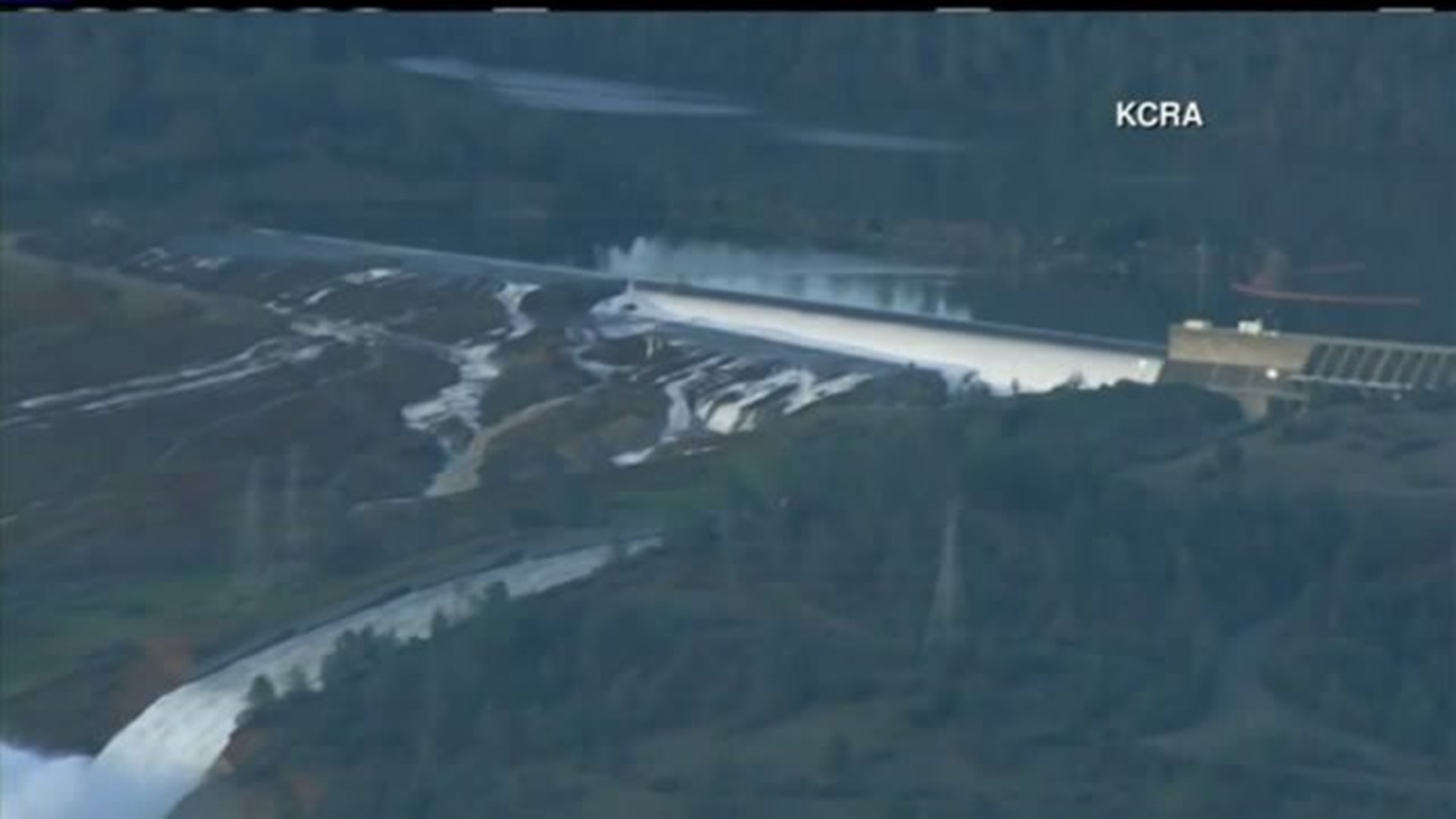(CNN) -- At least 188,000 people have evacuated from several Northern California counties after damage to a spillway at the Oroville Dam.
The dam, which is the nation's tallest, remains intact. But the emergency spillway, which guards against the overflow of the dam when water levels are high, was eroding Sunday.
The damage prompted a mandatory evacuation for cities and counties near Lake Oroville. In the worst case scenario, one official said, an uncontrolled release from the dam could send a 30-foot wall of water downstream.
"I'm not going to lift the evacuation order until I have a better idea of what that means and what risk that poses," Butte County Sheriff Kory Honea said in a news conference late Sunday night.
Officials are waiting until daylight Monday to better assess the situation and decide when it's safe for residents to return, Honea said.
California Gov. Jerry Brown issued a state emergency order to help local authorities with the situation and evacuations.
What led up to the emergency
Heavy rainfall in Northern California this winter has filled Lake Oroville to the verge of overflow. The lake also gets water from the northern Sierra Nevada mountain range, which is experiencing one of its wettest seasons. This has triggered concerns over whether the water could overflow the dam and flood nearby communities.
The Oroville Dam provides flood control for the region and is located about 75 miles north of Sacramento.
The dam has two spillways -- the primary and the emergency spillway -- which are channels to leak water out of the lake to prevent overflow. And right now, both have problems.
Last week, the primary spillway was damaged by erosion, according to the California Department of Water Resources. Images of the structure showed a massive hole in the lower part of the channel.
That hole can't be fixed at the moment. It's 250 feet long, 170 feet wide and about 40 to 50 feet deep, said Bill Croyle, acting director of the Department of Water Resources.
"You don't throw a little bit of rock in it," he said.
Of the two, the emergency spillway is a last resort. At Oroville Dam, the emergency spillway is only used if water levels reach 901 feet in elevation. It hasn't needed to be used in its 48-year history -- until this weekend.
Why evacuation order was made
A light flow of water began washing into the emergency spillway Saturday and the volume of water began to increase. Around 3 p.m. (6 p.m. ET) Sunday, authorities learned that the dam's emergency spillway was also eroding, Honea said.
The erosion of the emergency spillway is dangerous because "when you start to erode the ground, the dirt and everything else starts to roll off the hill," said Kevin Lawson, California Fire incident commander.
"It starts to undermine itself. If that is not addressed, if that's not mitigated properly, essentially what we're looking at, is approximately a 30-foot wall of water," he said.
Evacuation orders on Sunday sternly warned residents that the erosion could result in "large, uncontrolled releases of water from Lake Oroville."
Honea's office used the most urgent of language -- "This is NOT a drill" -- in ordering residents to evacuate ahead of an impending disaster. Residents were told that the emergency "spillway is close to failing." The evacuation order included "all Yuba County on the valley floor" and the city of Marysville, authorities said.
About 35,000 people from Butte County, 65,000 from Yuba County, 76,000 from Yuba City and 12,000 from Marysville City evacuated, according to California Fire.
Stores closed. Shelters opened. Local gas stations were swarmed with cars as residents tried to leave town. Evacuees waited in traffic trying to get out of low-lying areas.
Sean Dennis, who lives 30 miles south of Oroville, spoke to CNN from his car after spending 4.5 hours in bumper-to-bumper traffic.
"It was pretty scary, just because of how fast everything was developing," he said. "Me and my wife managed to throw as much of stuff as we could into garbage bags, whatever we could find. We got both of our cars loaded down pretty well. We're not taking any chances."
Police said that despite rumors, there were no reports of looting.
Watching the damage
After issuing the evacuation orders, authorities noted significant decreases in the water coming over the emergency spillway.
The flow of water on the emergency spillway eventually stopped Sunday night as the Department of Water Resources withdrew more water from the other spillway.
The main spillway is releasing water at 100,000 cubic feet per second in an effort to reduce the amount of water traveling down the emergency spillway, authorities said. Normal flows down the main spillway are about 55,000 cubic feet per second.
"The goal is to get the lake to drop 50 feet. If we can continue to do that, that brings a little bit of calm to what we're trying to accomplish here," said Cal Fire's Lawson.
So far, there have been no repairs made on the emergency spillway, because teams have been unable to reach the damaged area.
Teams will take a look and assess the situation Monday morning, Croyle said.
Authorities will have to act fast -- more rain is in the forecast for Wednesday.

